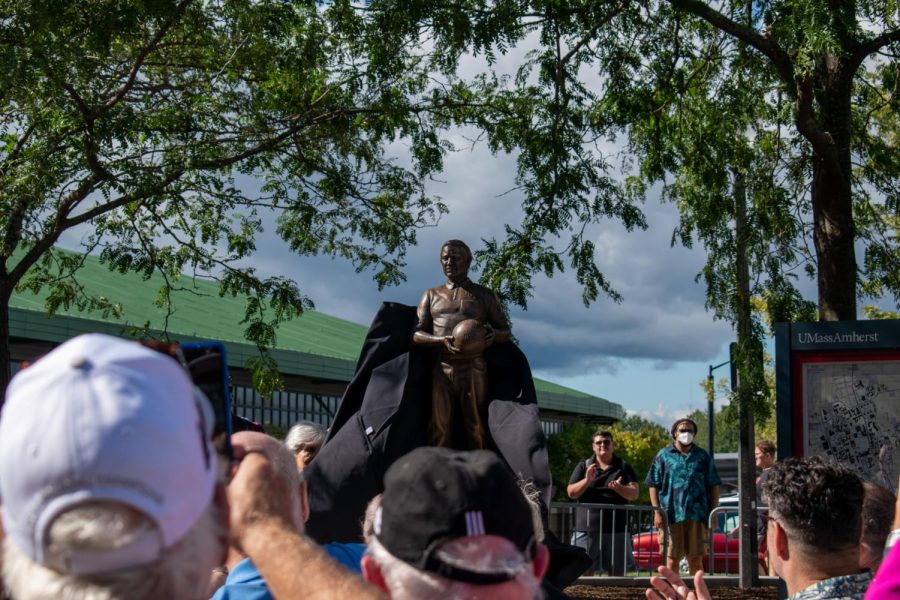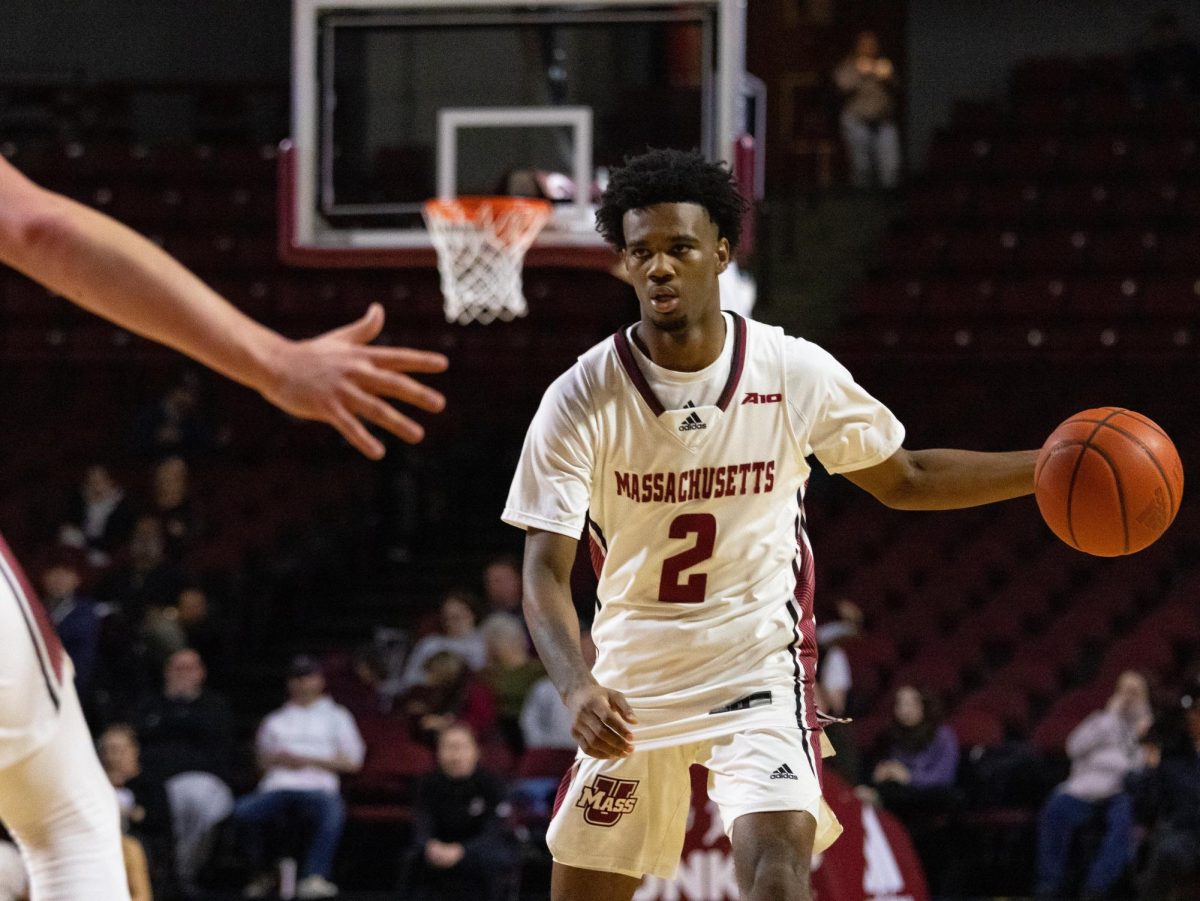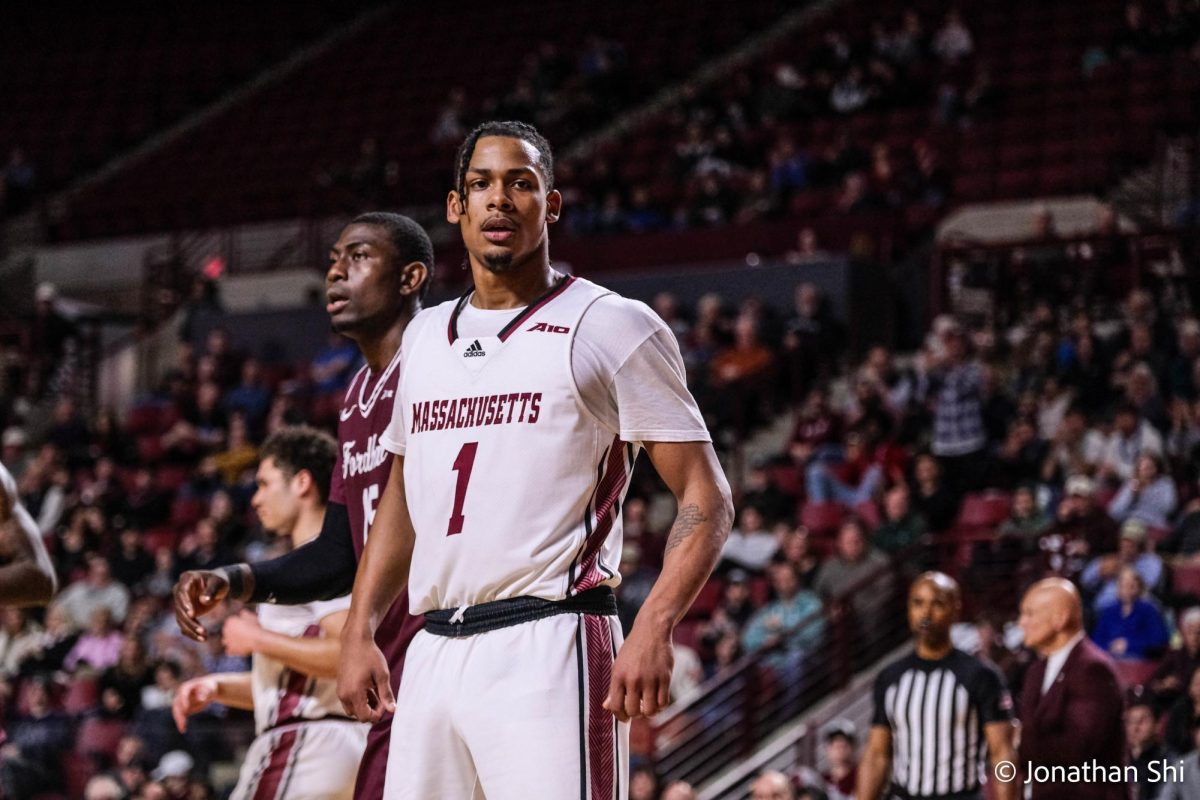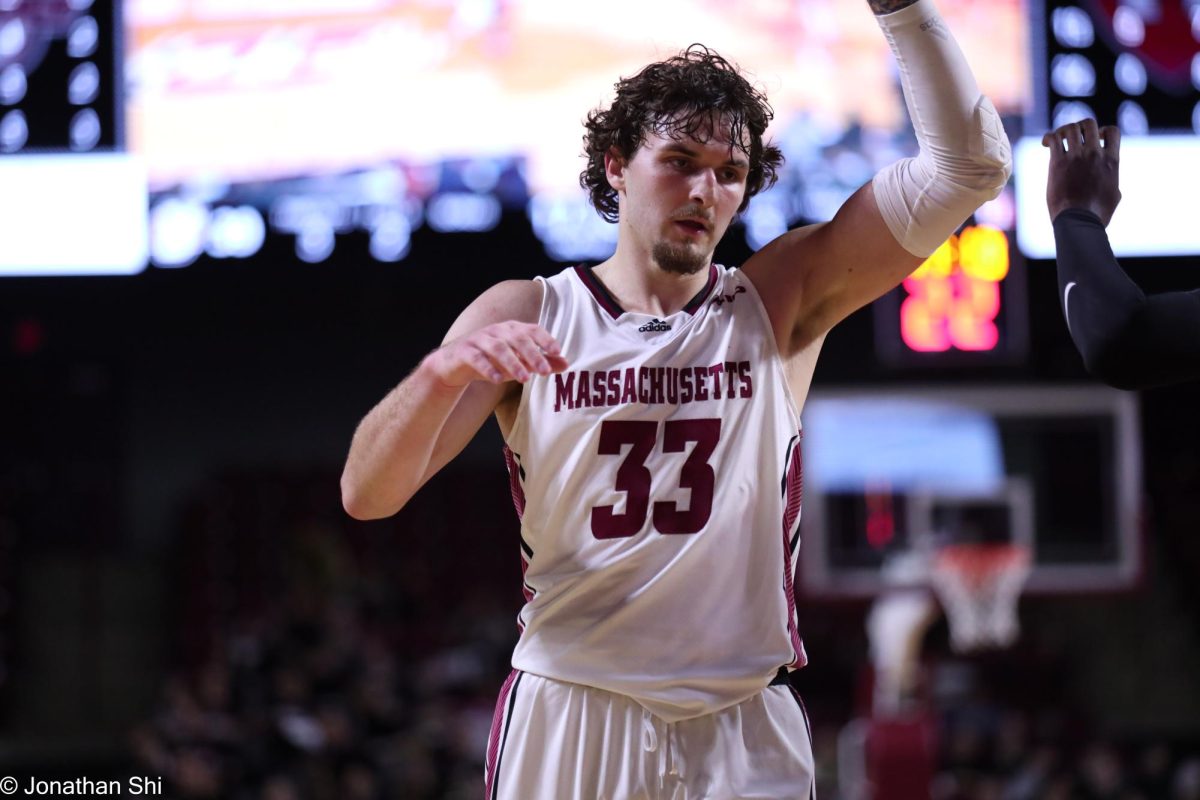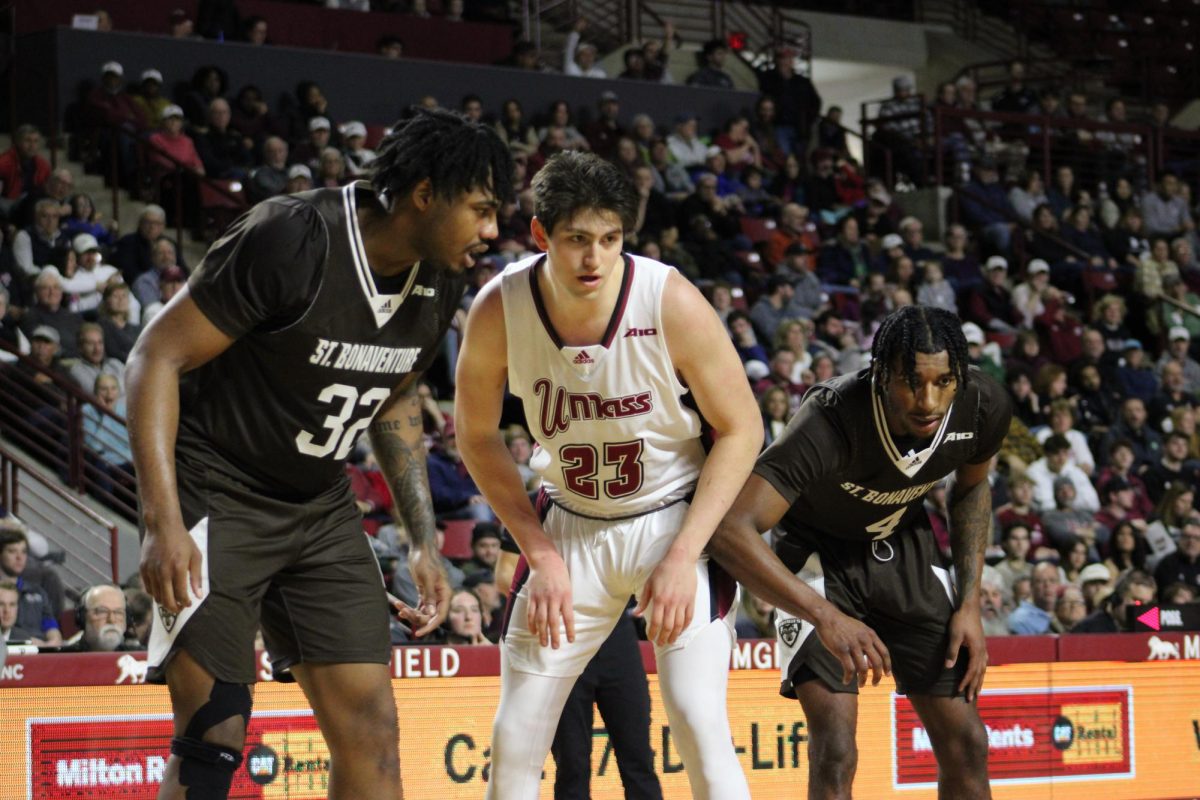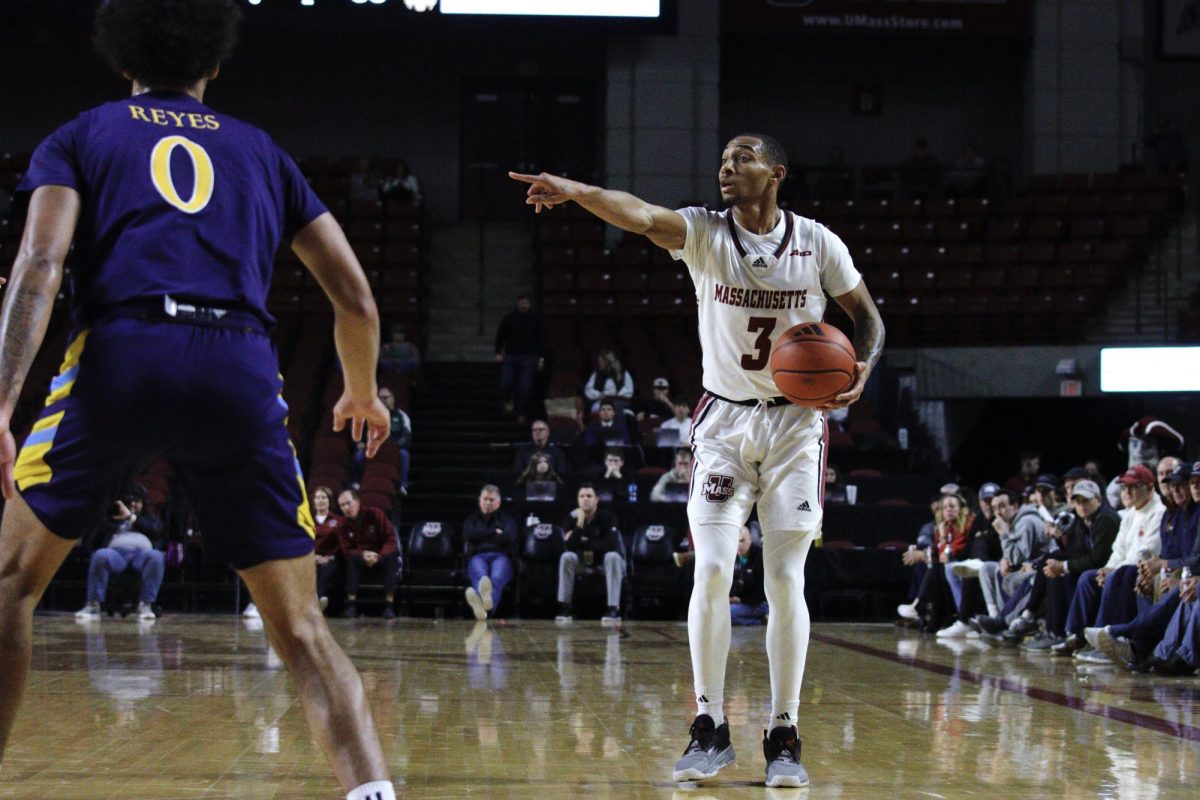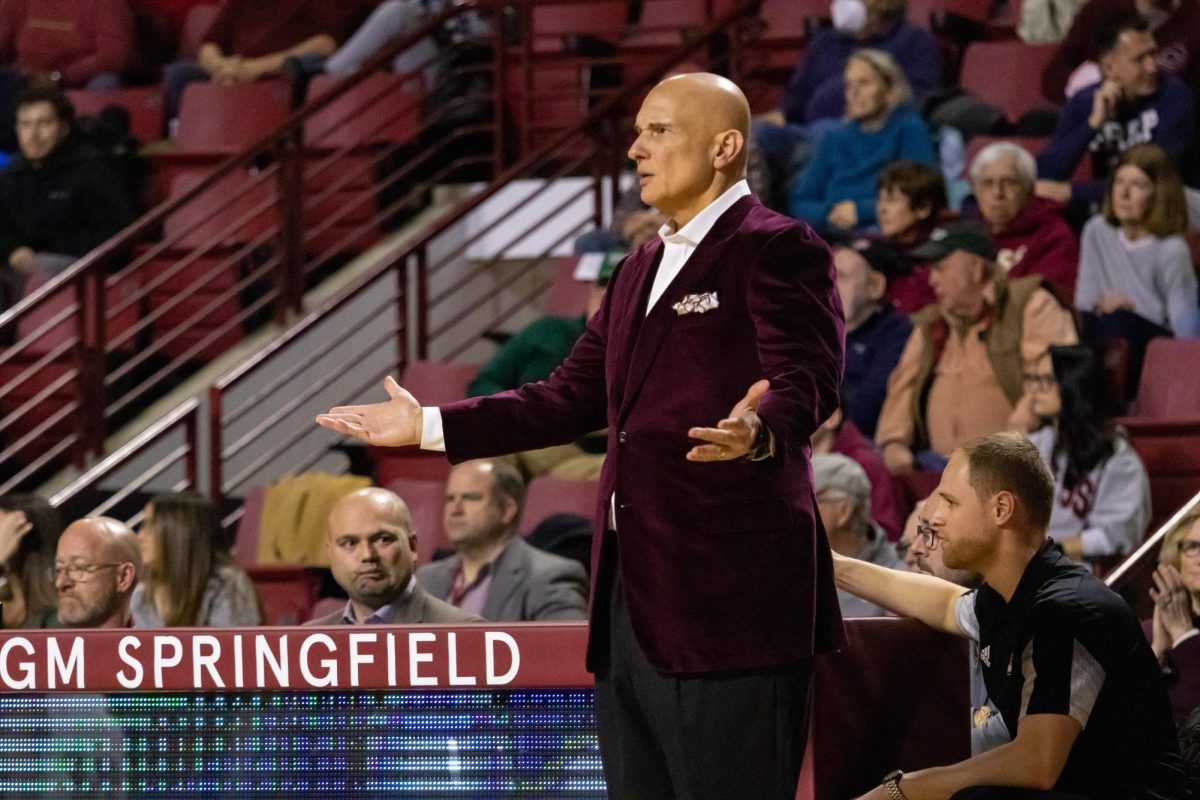On Friday, the University of Massachusetts unveiled statues for Hall of Famers John Calipari, Marcus Camby, Julius Erving and Jack Leaman. A ceremony honoring their legacy and accomplishments at UMass was attended by former teammates, coaches, family and current players of the men’s and women’s basketball teams. The unveiling of the statues was a prelude to the dinner ceremony inducting the 1995-1996 team into the UMass Hall of Fame.
Calipari, Camby and Erving’s respective successes intertwine, but their interpretation of Friday’s event, and the personal impact that the ceremony had varied for the three former members of the UMass community.
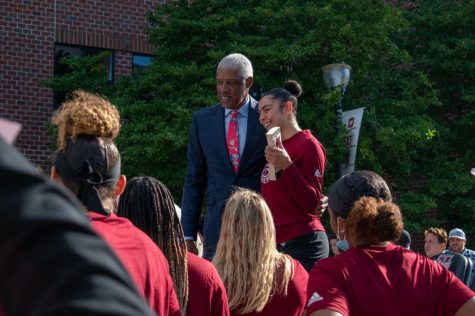
Erving’s remarks began with a nod to Leaman’s wife, Rita Leaman. Stories of Leaman’s generous efforts throughout the time he was involved in UMass athletics were shared by Rita and their daughter Laurie. Erving was second in line to speak, and began with reinforcing the idea that behind every great man is a great woman, and Rita is no exception to that.
As Erving’s voice echoed over the wind that gusted through the ceremony, the words he spoke followed with what he started with. A nod to those who got him to the point of a statue on campus, rather than prideful stories about his legendary basketball days.
His autobiography sat in his hand as he spoke because, according to Erving, his memory needed some help recalling times that would be relevant to Friday’s ceremony.
“Maybe I could fill in some of the blanks, maybe I could say something that could help them with their development during this transitory time,” Erving said while looking at the Massachusetts men’s and women’s basketball team to each side of the podium.
The answers that Erving had came through an emotional story, not a quote or tip that would benefit their athletic performance. Following spring break of Erving’s freshman year, riding on the high of going 17-0 in his freshman season, Erving returned back to New York prematurely.
“And now my younger brother passes,” Erving said. “I am his role model, he is my best friend, I am representing the family, he is the next one coming up…probably at that point I experienced the saddest day of my life while I was a student here at UMass and I probably had options at that time.”
Thus, two options presented themselves.
“Pack it in or accelerate and rise…every basketball game I played, every basketball practice I played, my brother’s spirit was with me, it was with me 100 percent.”
The statue that now sits in front of the Mullins center will remind generations of UMass students of “Dr. J.” But the opportunity to devote gratitude and appreciation to the environment that allowed him to thrive was not one that Erving was looking to pass up.
“You know that I am a softie now… that was just honesty in terms of emotion, talking about my brother’s passing,” Erving said. “A lot of the UMass experience there were ups and downs and wins and losses and there’s success and failures. We try not to make the failures, the end of the game. A lot of what people would consider a failure, we consider a non-success.”
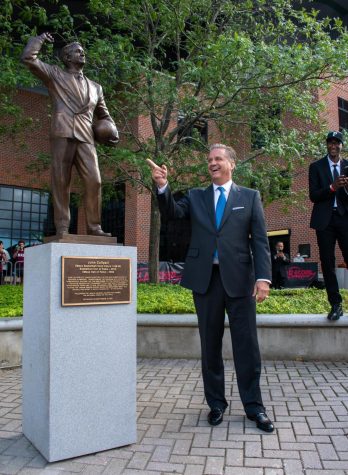
For Calipari, it was never about the accolades or the banners hanging down the rafters at the Mullins Center or the countless wins and accomplishments he achieved as UMass men’s basketball head coach from 1988-1996. It was the lasting legacy he left and the bonds that were grown from each of his team’s all the way through to the current generation.
“I like the players that are here [on the men’s and women’s team] to see the camaraderie of that 1995-1996 team,” Calipari said in his remarks. “To understand just about every team we had was why we became good. You get close and you go through things together.”
Calipari’s lasting legacy on the UMass men’s basketball program was felt much more than any statue unveiling could do. His accomplishments rank among the best of the best. He was the Naismith College Coach of the Year in 1996 in his final year with UMass, the season in which he led the Minutemen to the Final Four. Calipari understood the dedication required to get to that level of winning but it wasn’t always easy especially when UMass wasn’t bringing in the biggest names in its recruiting classes.
“We couldn’t get a big kid until we got Marcus [Camby],” Calipari said. “We had everybody else but we were getting six-foot-six to six-foot-seven guys but then they got to campus and they were six-five. But I always had tough kids who were great teammates. We would outough everybody we played. There were years we shot 40 percent from the floor and won 25 games. And then if we shot 48 percent we won 30 games.”
His impact on the UMass basketball program has been felt ever since he left the University. The winning passion instilled from program to program was further grown by Calipari. The unveiling of his statue cementing his legacy into UMass history was certainly the icing on the top.
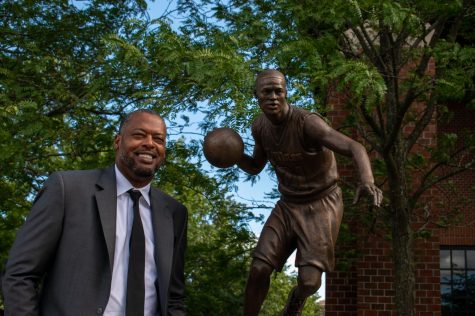
The cool and collected Camby discussed his retirement. The 47-year old has three daughters: the eldest is a freshman at the University of Houston, the middle a freshman in high school and the youngest is in fifth grade.
Camby also touched on social media, titling it a catch-22 for players to have such easy access to. He advised players to build a brand on social media rather than to fall into the trap of allowing it to hinder your performance while competing and even your everyday lifestyle.
Three of the brightest years this program has experienced have come in Camby’s three years on campus. It has now been 25 years since Camby and UMass took the nation by storm, which is something he is trying to remind the current Minutemen players of.
“It’s a new era, it’s a new style of basketball,” Camby said he told the players. “Just embrace it and be yourselves.”
Camby smirked when asked if he thinks his statue looks similar to him.
“I think no one ever thinks their statue looks like them,” he said with a laugh.
Joey Aliberti can be reached at [email protected]. Frederick Hanna III can be reached at [email protected]. Lulu Kesin can be reached at [email protected].

